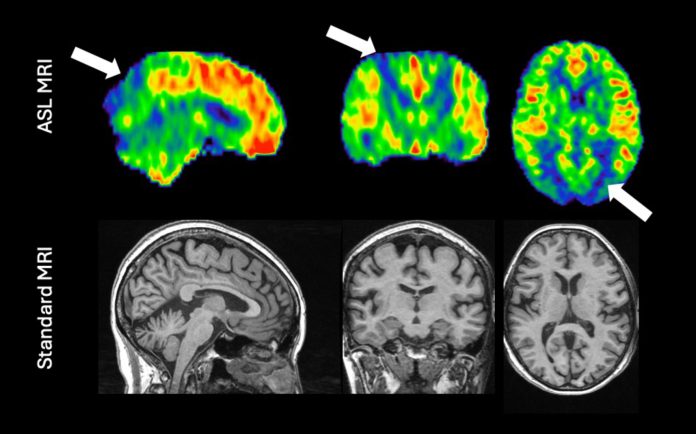
Quantified Imaging, originating from the University of Nottingham, specialises in advanced MRI techniques to improve dementia care, diagnosis, monitoring, and treatment. Their technology is based on arterial spin labelling, a non-invasive imaging technique to measure brain blood flow in under five minutes using standard hospital MRI scanners
Dementia care is on the cusp of a revolution thanks to breakthrough developments of cheap and scalable blood tests for diagnosis and the approval of the first amyloid-reducing therapies like lecanemab and donanemab. Never before has it been possible to modify the progression of dementia, and the next generation of therapies in development look to improve on this yet further. However, given the cost (around £20,000 per patient) and risk of serious side effects, the treatments must be used with great care. Early patient identification and accurate treatment monitoring are of vital importance to ensure the treatments are given to the right patients, thereby achieving the best possible outcomes.
The challenge with imaging tests in dementia care
Imaging is currently a bottleneck in dementia care. Although PET scans are the gold standard of diagnosis – and indeed, a PET scan must be performed before starting amyloid therapy – there are not enough PET scanners, nor radiologists to read the scans, to meet the explosion in demand set in motion by the approval of the drugs. At one centre in the US, referrals for diagnostic imaging have increased five times over since donanemab was approved. Nevertheless, Quantified Imaging believes that imaging will remain on the standard of care pathway for dementia because of its actionability. Although blood tests have an excellent ability to identify the presence of disease many years in advance of overt symptoms, only imaging is able to look inside the brain and determine when treatment should start. Similarly, only imaging can measure how the brain responds to treatment, which is particularly important given the known risks of treatment.
Quantified Imaging is developing advanced MRI technology to substitute for PET and address the bottlenecks in imaging. Arterial spin labelling (ASL) is a type of MRI that demonstrates similar sensitivity to Alzheimer’s disease as PET, but with the major advantage of not exposing the patient to toxic or radioactive compounds, which means it is more suitable for repeated use on follow-up imaging. Further, MRI is a cost-effective and scalable solution: globally, there are five times more MRI scanners than PET, and an MRI scan typically costs a quarter of the price of a PET scan. To ease the adoption of this new technology and relieve the pressure on radiologists, Quantified Imaging is developing software to automatically measure disease biomarkers and highlight the disease patterns characteristic to each dementia subtype, both of which will assist radiologists when visually reading scans, which is the most time- consuming part of the workflow.
Unifying blood and imaging biomarkers
What role, then, is there for emerging blood tests? No single technology will be able to meet the dementia challenge alone. Blood tests will be part of the solution, which means more people can receive accurate diagnoses and thus start treatment far more rapidly than is currently possible. But, on their own, they cannot give the information needed on the impact of the disease on brain tissue needed to tailor treatment to the individual, minimising risk and maximising benefit. With this in mind, Quantified Imaging is developing technologies to unify blood and imaging biomarkers into a single diagnostic and treatment monitoring framework. Central to this is a predictive model of brain health that is personalised to a patient’s age, sex and anatomy. Currently, in testing with a leading brain health clinic in the UK, in the future, the model will be expanded to include a patient’s blood test results to further increase personalisation. Ultimately, we believe that this technology can be developed into a broader measure of overall brain health, which will greatly improve our ability to prevent, monitor and treat a variety of neurological diseases.

This work is licensed under Creative Commons Attribution-NonCommercial-NoDerivatives 4.0 International.







